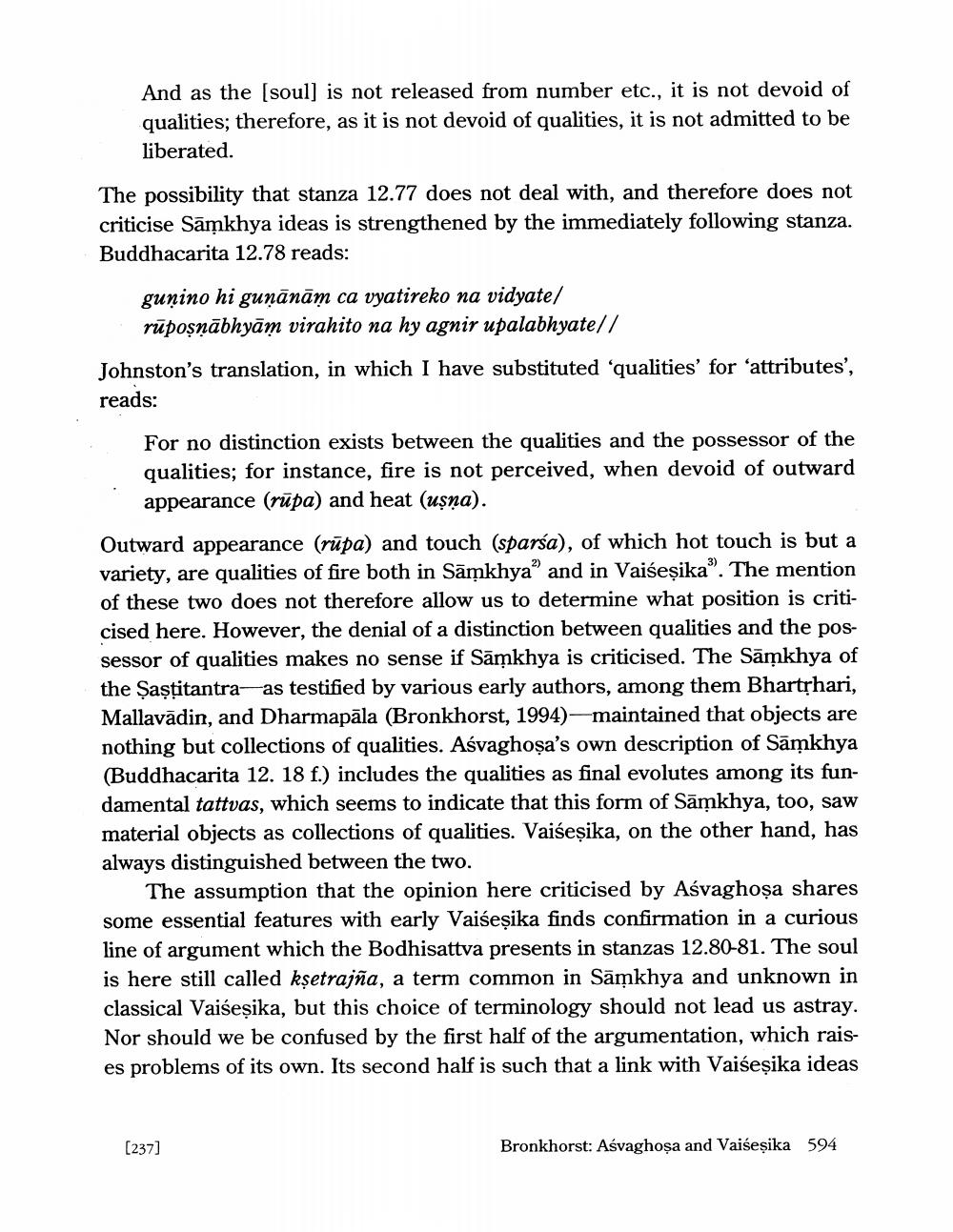Book Title: Asvaghosa And Vaisesika Author(s): Johannes Bronkhorst Publisher: Johannes Bronkhorst View full book textPage 4
________________ And as the (soul] is not released from number etc., it is not devoid of qualities; therefore, as it is not devoid of qualities, it is not admitted to be liberated. The possibility that stanza 12.77 does not deal with, and therefore does not criticise Sāmkhya ideas is strengthened by the immediately following stanza. Buddhacarita 12.78 reads: gunino hi guņānām ca vyatireko na vidyate/ rūpoşņābhyām virahito na hy agnir upalabhyatel/ Johnston's translation, in which I have substituted 'qualities' for 'attributes', reads: For no distinction exists between the qualities and the possessor of the qualities; for instance, fire is not perceived, when devoid of outward appearance (rupa) and heat (usna). Outward appearance (rūpa) and touch (sparsa), of which hot touch is but a variety, are qualities of fire both in Sāmkhya" and in Vaišeşika'. The mention of these two does not therefore allow us to determine what position is criticised here. However, the denial of a distinction between qualities and the possessor of qualities makes no sense if Sāņkhya is criticised. The Sāmkhya of the Şaştitantra-as testified by various early authors, among them Bhartshari, Mallavādin, and Dharmapāla (Bronkhorst, 1994)-maintained that objects are nothing but collections of qualities. Aśvaghoşa's own description of Sāmkhya (Buddhacarita 12. 18 f.) includes the qualities as final evolutes among its fundamental tattvas, which seems to indicate that this form of Sāmkhya, too, saw material objects as collections of qualities. Vaišeşika, on the other hand, h always distinguished between the two. The assumption that the opinion here criticised by Aśvaghosa shares some essential features with early Vaiseșika finds confirmation in a curious line of argument which the Bodhisattva presents in stanzas 12.80-81. The soul is here still called kşetrajña, a term common in Sāmkhya and unknown in classical Vaišeşika, but this choice of terminology should not lead us astray. Nor should we be confused by the first half of the argumentation, which raises problems of its own. Its second half is such that a link with Vaiseșika ideas [237] Bronkhorst: Ašvaghoşa and Vaiseșika 594Page Navigation
1 2 3 4 5 6 7 8
